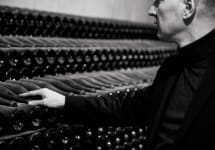Champagne Telmont Reserve Brut
-
Wilfred
Wong - Decanter
-
Wine &
Spirits -
Jeb
Dunnuck





Product Details
Your Rating
Somm Note
Winemaker Notes
Réserve Brut is the result of a subtle marriage of three grape varieties. It is a blend of seven distinct years, together beautifully balanced, a perfect harmony of richness, fruitiness and freshness. A genuine expression of terroir, a tribute to the excellence and singularity of each year’s harvest. Marked by honeysuckle and a hint of vanilla on the nose with an elegant foam. Plentiful in baked fruits: Mirabelle plum with a slight spice on the mid-palate that gives way to a long candied tropical-fruit and brisk mineral finish.
Professional Ratings
-
Wilfred Wong of Wine.com
COMMENTARY: The Champagne Telmont Réserve Brut Champagne is fresh and bright. TASTING NOTES: This wine offers aromas and flavors of dried leaves, savory spices, and mineral notes. Try it with linguine and clams in a light garlic broth. (Tasted: May 18, 2022, San Francisco, CA)
-
Decanter
A savoury style that flies the flag for elegance. Layered with delicate peach, rosemary, mushroom and white truffle notes. Blend : 43% Chardonnay, 37% Pinot Meunier, 20% Pinot Noir
-
Wine & Spirits
Pinot meunier (37 percent of this blend) lends a perfumed strawberry note to the brisk, chalky chardonnay (43 percent). It feels clean and cool, a lively aperitif for plump Atlantic oysters.
-
Jeb Dunnuck
Produced from 53% Meunier, 31% Chardonnay, and the rest Pinot Noir, the NV Champagne Reserve Brut is based on the 2018 vintage (63%) with 12% from 2017, 12% from 2016, 2% from 2015, and the rest from older vintages. Comprising 80% of the house’s production, it pours a youthful yellow and lifts with aromas of quince, almond, white flowers, and a flourish of smoky earth. Generous on the palate, it’s fruity and inviting, with ripe orchard fruit, a gently fluffy mousse, and a fresh, pithy finish. Its lovely custardy and floral finish is long-lasting and takes this up a notch.






The House of Telmont was founded in 1912 by Henri L'hôpital, courageous wine grower, following the Champagne riots of 1911, in the village of Damery, near Epernay. The House is rich in ancestral know-how: four generations of winegrowers bequeathed their strong commitment to their terroir and their grapes to their successors, as well as the art of mastering each stage of wine making. Within their vineyards, important steps had been taken to transition towards organic agriculture. The wines have a unique personality, presence, complexity and maturity, all the while preserving a remarkable ethereality. Telmont’s style is defined by its tension and its freshness. The house enables the terroir to express itself through its champagne, employing its know-how to help reveal the various facets of nature.

A term typically reserved for Champagne and Sparkling Wines, non-vintage or simply “NV” on a label indicates a blend of finished wines from different vintages (years of harvest). To make non-vintage Champagne, typically the current year’s harvest (in other words, the current vintage) forms the base of the blend. Finished wines from previous years, called “vins de reserve” are blended in at approximately 10-50% of the total volume in order to achieve the flavor, complexity, body and acidity for the desired house style. A tiny proportion of Champagnes are made from a single vintage.
There are also some very large production still wines that may not claim one particular vintage. This would be at the discretion of the winemaker’s goals for character of the final wine.

Associated with luxury, celebration, and romance, the region, Champagne, is home to the world’s most prized sparkling wine. In order to bear the label, ‘Champagne’, a sparkling wine must originate from this northeastern region of France—called Champagne—and adhere to strict quality standards. Made up of the three towns Reims, Épernay, and Aÿ, it was here that the traditional method of sparkling wine production was both invented and perfected, birthing a winemaking technique as well as a flavor profile that is now emulated worldwide.
Well-drained, limestone and chalky soil defines much of the region, which lend a mineral component to its wines. Champagne’s cold, continental climate promotes ample acidity in its grapes but weather differences from year to year can create significant variation between vintages. While vintage Champagnes are produced in exceptional years, non-vintage cuvées are produced annually from a blend of several years in order to produce Champagnes that maintain a consistent house style.
With nearly negligible exceptions, . These can be blended together or bottled as individual varietal Champagnes, depending on the final style of wine desired. Chardonnay, the only white variety, contributes freshness, elegance, lively acidity and notes of citrus, orchard fruit and white flowers. Pinot Noir and its relative Pinot Meunier, provide the backbone to many blends, adding structure, body and supple red fruit flavors. Wines with a large proportion of Pinot Meunier will be ready to drink earlier, while Pinot Noir contributes to longevity. Whether it is white or rosé, most Champagne is made from a blend of red and white grapes—and uniquely, rosé is often produce by blending together red and white wine. A Champagne made exclusively from Chardonnay will be labeled as ‘blanc de blancs,’ while ones comprised of only red grapes are called ‘blanc de noirs.’
